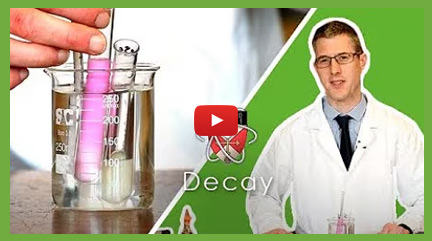
Organising an Ecosystem
An ecosystem is a community of living organisms interacting with the non-living parts of their environment, like air, water, and soil. Learn how nutrients and energy flow through food chains, how materials are recycled, and how different factors affect the balance of an ecosystem.
Practicals on this page:
Investigating Decay
Environmental Change
Changes in the environment can affect the distribution and survival of organisms. These changes may be natural or caused by human activities such as:
- Temperature changes
- Availability of water
- Changes in atmospheric gases
- Pollution or deforestation
Organisms that can’t adapt to these changes may struggle to survive, affecting the balance of the ecosystem.
The Water Cycle
The water cycle describes how water moves continuously through the environment:
- Evaporation – The sun heats water, turning it into water vapour.
- Condensation – Water vapour cools and forms clouds.
- Precipitation – Water falls back to Earth as rain, snow, etc.
- Collection – Water returns to rivers, lakes, and oceans.
This cycle ensures that water is constantly recycled and available for plants and animals.
Revision Notes

The Cornell method is like a supercharged note-taking system that helps you ace your revision!
Print out our blank revision notes pages to help you revise.
How to make effective revision notes with the Cornell method.
Exam Questions & Answers

Download and print off practice our FREE worksheet with exam style questions on Cell Biology.
The Carbon Cycle
The carbon cycle shows how carbon is recycled in nature:
- Plants take in carbon dioxide during photosynthesis.
- Animals eat plants, transferring carbon through the food chain.
- Respiration by plants and animals releases CO₂ back into the air.
- When organisms die, decomposers break them down, releasing more CO₂.
- Combustion of fossil fuels also adds CO₂ to the atmosphere.
This cycle keeps the carbon levels in balance – essential for life on Earth.
Decay and Decomposition
Decay is the breakdown of dead material by microorganisms. This process:
- Returns minerals to the soil
- Releases carbon dioxide through respiration
- Helps recycle nutrients in an ecosystem
Factors like temperature, moisture, and oxygen affect how quickly decay happens.
Biogas and Biogas Generators
Biogas is a fuel produced by microorganisms breaking down organic material (like food waste or manure) anaerobically (without oxygen). It mainly contains methane, which can be burned to produce energy.
Biogas generators are tanks designed to carry out this process efficiently. They are used to manage waste and provide renewable energy in both small-scale and industrial settings.
Also see Biodiversity, Photosynthesis
PRACTICAL - Investigating Decay
In this practical, you investigate the conditions that affect the rate of decay, such as temperature, oxygen, and moisture. A common method involves using milk and lipase enzyme to observe how quickly pH drops as the milk decays. This helps you understand how microorganisms break down materials and how decay links to the carbon cycle.
Revision Notes

The Cornell method is like a supercharged note-taking system that helps you ace your revision!
Print out our blank revision notes pages to help you revise.
How to make effective revision notes with the Cornell method.



